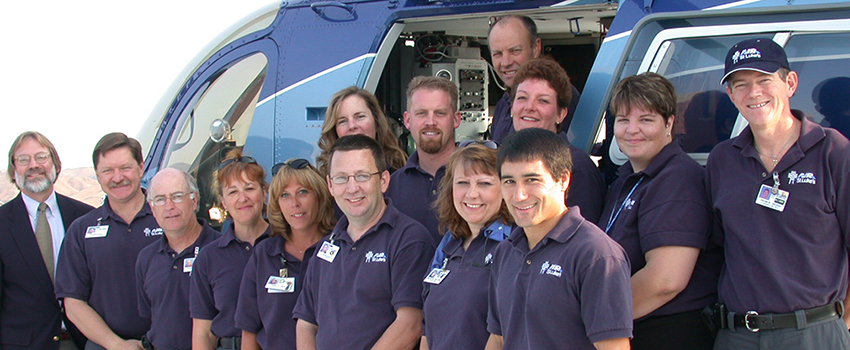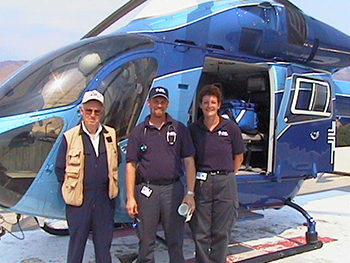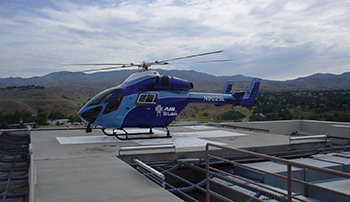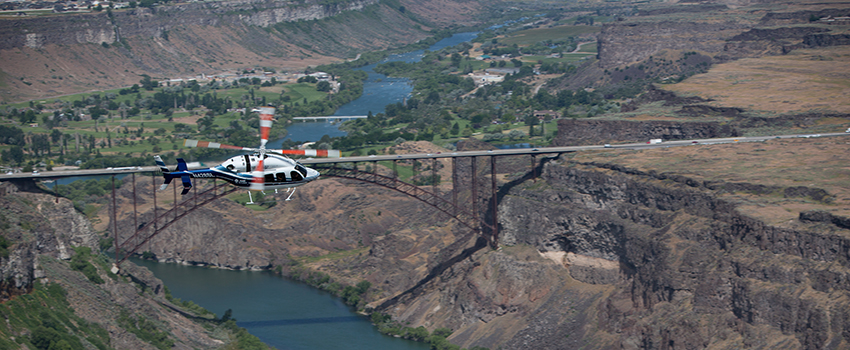Former Air St. Luke’s director reflects on team's 20 years of providing critical care

While serving as the first director of Air St. Luke’s in its modern incarnation, Mike McGrane said, “I always tried to depress ego and focus on taking care of patients.”
Picking up patients in ambulances or helicopters or even airplanes and immediately giving care while swiftly — and safely — bringing them to an emergency department can be a rush.
But for McGrane and those who started Air St. Luke’s as we know it, it was much easier to stay humble after its humble beginnings.
On July 24, 2002, Air St. Luke’s took flight with the addition of a dedicated crew and a helicopter.

“Honestly, it’s really satisfying to sit here and think, ‘it’s been 20 years,’” said McGrane, who served as director until retiring in 2015. “I look back, and I’m like, ‘wow, look what we accomplished.’ And it was a ‘we’ because that initial group really set the culture.”
The initial Air St. Luke’s team consisted of 22 members — six flight nurses, four flight paramedics, five communications specialists and four rotor pilots, plus McGrane, medical director K.C. Murphy and clinical supervisor Hal Iverson.
Today, the Air St. Luke’s team is approximately 125 members strong.
“At first, it was just me, then K.C., Hal and started to pull the team together … we had the staff together in about March and just had this intense training,” McGrane said. “(Former St. Luke’s CEO) Ed Dahlberg and the leadership, they gave us 150% percent support.”
Noting that “it was very different from a lot of things St. Luke’s does,” the original team started from scratch, determining what equipment was needed to figuring out the best way to schedule themselves.
And there also was the need to let the people of Idaho know that St. Luke’s was providing this new service. At first, the calls were hardly what one would call frequent, but there was a drive to make it work, buoyed by key support.
McGrane said one goal for him was to “break the ice” for St. Luke’s to be not just a Boise presence, but a regional one.
“I think we were a part of that, by the nature of what we did, we’d make overtures to smaller hospitals to offer them better care for their patients,” McGrane said.
That was always the primary goal for McGrane and his crew, not just establishing a name and a program. They wanted to extend St. Luke’s, bringing the hospital to patients in need and bringing them to a wide variety of care.
Initially, there was some debate about whether Air St. Luke’s would simply be a transport service, or if it would also offer ‘scene flights,’ taking care of patients where an incident occurs. Having the latter was vital for the program’s survival.
“I wanted to serve as a bridge,” McGrane said. “… It feeds into the capabilities of your staff. A lot of their focus was on critical care and trauma.
“(Outsiders) thought we’d only last six months. But here we are, 20 years later!”
From humble beginnings, Air St. Luke’s grew quickly, soon expanding ground transportation services and adding to the helicopter fleet. While many air medical services have privatized, Air St. Luke’s has remained part of St. Luke’s not-for-profit system.
McGrane noted “one of our greatest successes” was the creation of the Maternal-Child Critical Care Transport (MatCh) team.
“We also initiated a lot of training that has continued with ambulance teams or care teams in smaller communities that I think reflects St. Luke’s goal of improving health in the region,” McGrane said.
St. Luke’s now operates 10 ground ambulances, utilizes three Bell 429 helicopters (two primary, one backup) and two King Air 200 fixed wing planes as well as a CJ2 Jet. Idaho Helicopters Inc. provides aviation services and owns and operates the helicopters used by Air St. Luke's. Turbo Air, Inc. provides aviation services and owns and operates the airplanes used by Air St. Luke's.
In Fiscal Year 2021, Air St. Luke’s had approximately 6,550 completed patient transports from its bases in Boise, Twin Falls, Wood River and McCall.
“What we did, you gain a real appreciation for how fragile life is, I’ll tell you that,” McGrane said. “It’s contributing to the community and the region. It’s made a big difference and it’s continuing to make a difference.”
About The Author

Dave Southorn works in the Communications and Marketing department at St. Luke's.

